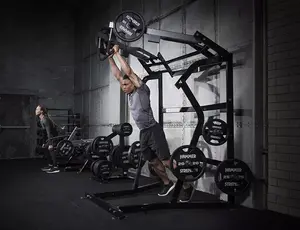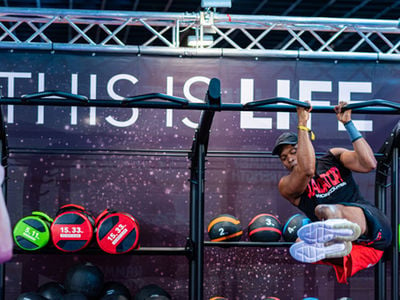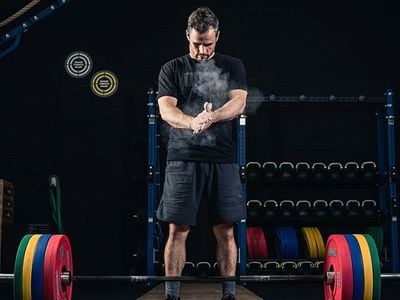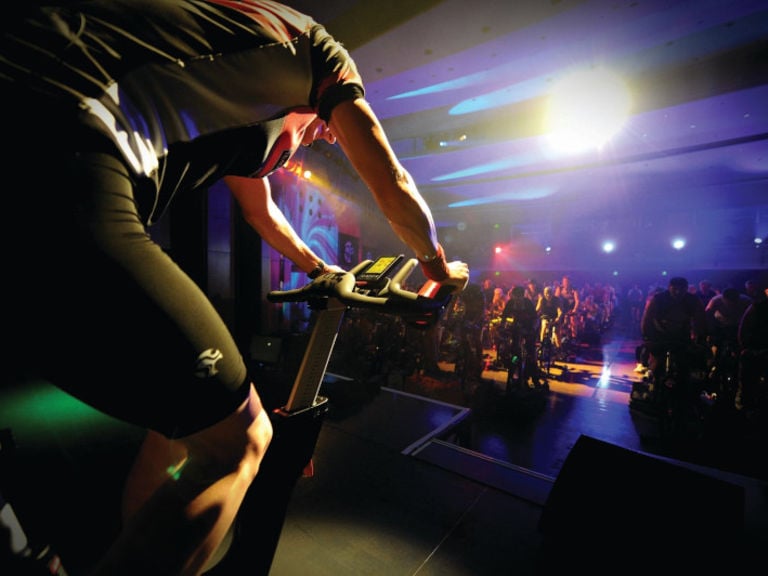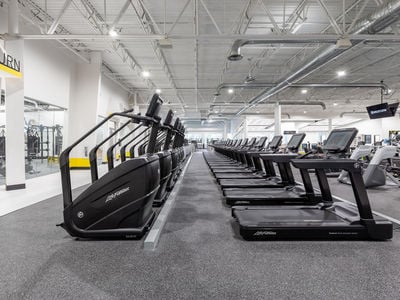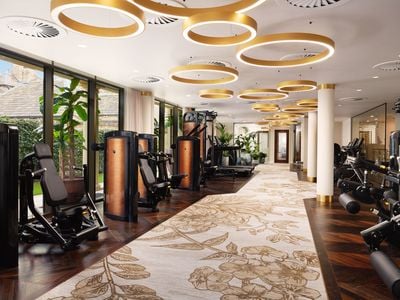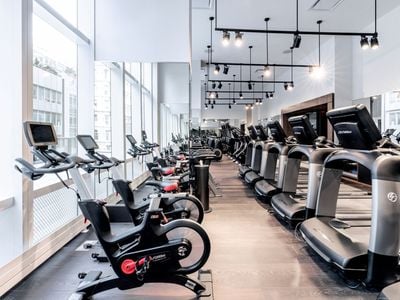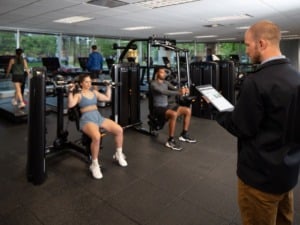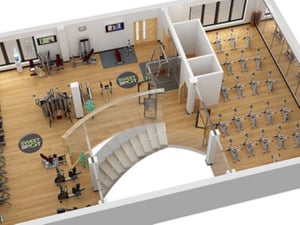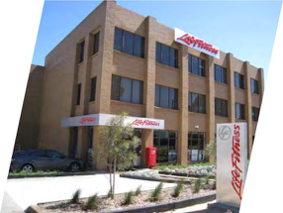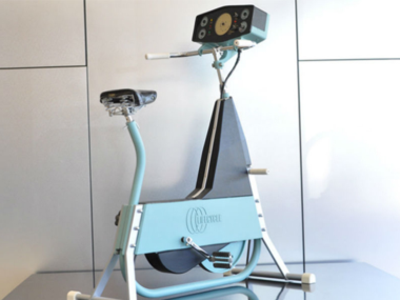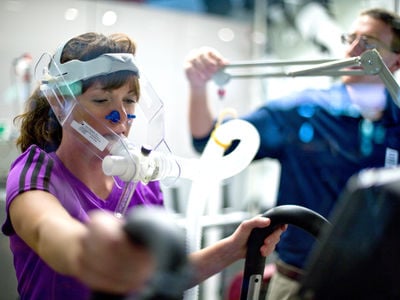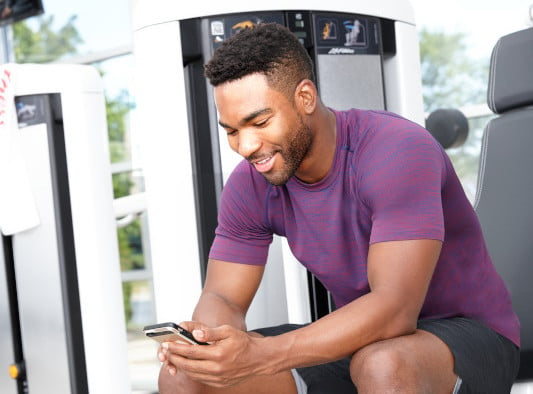The leg press vs squat debate is a classic among fitness enthusiasts, especially those aiming to build serious leg muscle. Both exercises are highly effective but serve varied purposes.
So, what’s the difference between leg press vs squats? In this guide, we’ll explore the techniques, benefits and potential limitations of each exercise, helping you choose which is best suited for your fitness goals.
How do leg presses work?
The leg press is a controlled, closed-chain exercise performed on a specialised machine. Users sit or lie down and push a weight away from themselves using their legs.
The most common configuration features a seat and a weighted platform set at a 45-degree angle, where the feet press against the platform, moving it along a guided track.
This setup offers stability and allows for substantial weight to be used safely. Ideal for beginners, the leg press is excellent for isolating lower body muscles without requiring the balance needed for free-weight exercises like squats.
Exploring the benefits of leg press exercises
Adaptable and versatile
Many leg press machines feature adjustable settings to ensure comfort for a wide range of users. They also provide multiple resistance options that support various training styles, including endurance workouts and muscle-building for hypertrophy.
Additionally, the leg press allows beginners to gradually increase the weight they are lifting and quickly become familiar with heavier weights.
Reduced need for balance and stabilisation
Unlike squats or lunges, which demand significant core stability and balance, the leg press machine offers a stable and controlled setting for exercising.
When performing free-weight compound movements, a portion of your energy is diverted to stabilising muscles. This makes the exercise feel exhausting before your leg muscles are fully fatigued. In contrast, the leg press allows you to channel all your energy directly into the primary leg muscles, enhancing the effectiveness of the workout.
Lower body isolation and development
Using a leg press machine allows you to focus entirely on strengthening your legs. Unlike exercises like squats or deadlifts, where fatigue in these areas might end a set prematurely, the leg press lets you channel all your energy into developing leg muscles.
By adhering to correct form and progressive overload, you can use the machine to enhance muscle size, leg strength and functionality.
How do squats work?
This movement involves bending your knees to lower yourself down and then rising back up. Squat variations can incorporate different equipment, such as yoga balls, dumbbells, barbells or even resistance bands, to enhance the workout.
Discovering the benefits of squatting
Enhanced core stability
By engaging the abdominal and back muscles to maintain balance and posture during the squat, this exercise helps strengthen the core, which is vital for overall body stability.
Increased flexibility
Regular squatting can improve flexibility in the lower back and legs, helping enhance movement efficiency and reduce the risk of injuries.
High-intensity workout
Squats burn a significant number of calories, which can be beneficial for weight management and overall health.
Leg press vs squat press — key differences
Muscle targeting
Leg press mainly focuses on the quadriceps, hamstrings and glutes. However, since it’s a machine-based exercise, it doesn’t engage the core or stabilising muscles as much as squats.
Squats likewise engage your quads alongside your core and lower back. They provide an overall leg workout in a single movement, while leg presses target and intensify the focus on your quadriceps.
Difficulty
Leg presses might be more suitable for beginners due to their controlled and stable environment. This technique is more accessible if you’re struggling with a back injury or limited range of motion.
On the other hand, squats are more challenging than using a leg press machine because it is a free weight exercise that demands more balance and coordination.
Versatility
Unlike leg presses, squats don’t require machines and can be performed virtually anywhere. You can do squats with just your body weight or with whatever weights are available.
Safety
Leg press machines feature built-in safety mechanisms like stops and catches, preventing the weight from going too low.
In contrast, squats, especially with heavy weights, pose a higher injury risk and generally require a safety rack or spotter.
Squats vs leg presses — which is better?
Both exercises have their place in a well-rounded fitness regimen. If your goal is to gain comprehensive strength, improve functional mobility and ensure multi-muscle engagement, squats are likely more beneficial.
However, if you’re focused on isolating and building leg muscles, particularly if you have limitations that prevent you from squatting safely, leg presses may be the better choice.
Ultimately, incorporating both exercises into your routine can provide a balanced approach, maximising both general fitness and specific muscle development. However, it’s essential to consult a fitness professional to tailor these exercises to your specific needs, especially if you have pre-existing conditions or injuries.
Elevate your workouts with Life Fitness
When it comes to squatting vs leg press, the right choice depends on your unique fitness goals and physical capabilities. Combining these exercises in one workout session can deliver optimal results. Just ensure you allow adequate recovery time between sessions and prioritise good nutrition and hydration!
At Life Fitness, we offer state-of-the-art workout equipment built to support both beginners and seasoned athletes. Upgrade your home gym or commercial facility with our selectorised strength machines or plate loaded strength machines designed for both durability and sound biomechanics.
Browse our selection today and invest in equipment that empowers your workouts. To learn which machines best suit your fitness needs, feel free to contact our friendly team.

